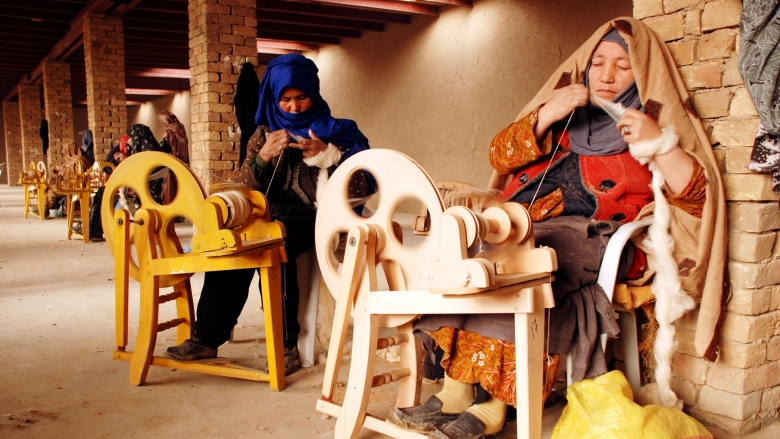More frequent incidences of violence in Afghanistan, as well as delays in the elections process and cabinet formation, continued to fuel uncertainty and affected investor confidence in 2014 and the first half of 2015. The October 2015 issue of Afghanistan Development Update by The World Bank reports that economic growth slowed to 1.3 percent in 2014, down from 3.7 percent a year earlier. Unlike in previous years, agriculture did not contribute much to growth in 2014. Growth was mainly driven by a slight expansion of services and industries.
Afghanistan Development Update writes that growth – projected at 1.9 percent in 2015 – will likely remain sluggish in light of a further deterioration in security over the first three quarters in 2015. Private investment activities remain low, as the number of new firm registrations in the first six months of the year were at the same level as in the first half of 2014.
According to the report, fiscal developments in Afghanistan point to some headway on revenue mobilization in 2015. Domestic revenues increased over the first 8 months of 2015 as a result of improvements in the customs and tax administration. The most recent projections indicate that domestic revenues will reach Af 114.2 billion (equivalent to 9.8 percent of GDP) by end 2015, falling much behind the initial target of Af 120 billion.
However, recurrent expenditures are also projected to increase in 2015, due to growing security costs. Substantial, additional discretionary donor grants this year—agreed under the New Development Partnership Agreement with the United States and the Afghanistan Reconstruction Trust Fund (ARTF) Incentive Program—will likely help to balance the budget this year. Nevertheless, the budget may run a deficit if the Government fails to meet the agreed commitments that trigger fund disbursements under these programs.
The medium-term outlook, as put forward in this report, points to slow post-transition recovery. Real GDP growth is projected to increase to 3.1 and 3.9 percent in 2016 and 2017 respectively, conditioned on improvements in the security environment and strong reform momentum, which could help restore confidence in the economy. The report stresses that Afghanistan faces significant financing shortages for both civilian and security spending. Therefore, securing continued high levels of donor financing over the coming years is of critical importance for fiscal stability in the country.
Afghanistan Development concludes that the fragile security environment and financing constraints, compounded by weak governance capacity, pose serious challenges to service delivery in Afghanistan. Any setback in reform implementation would further slowdown the pace of human capital accumulation in Afghanistan and reduce future prospects of growth and poverty reduction.

